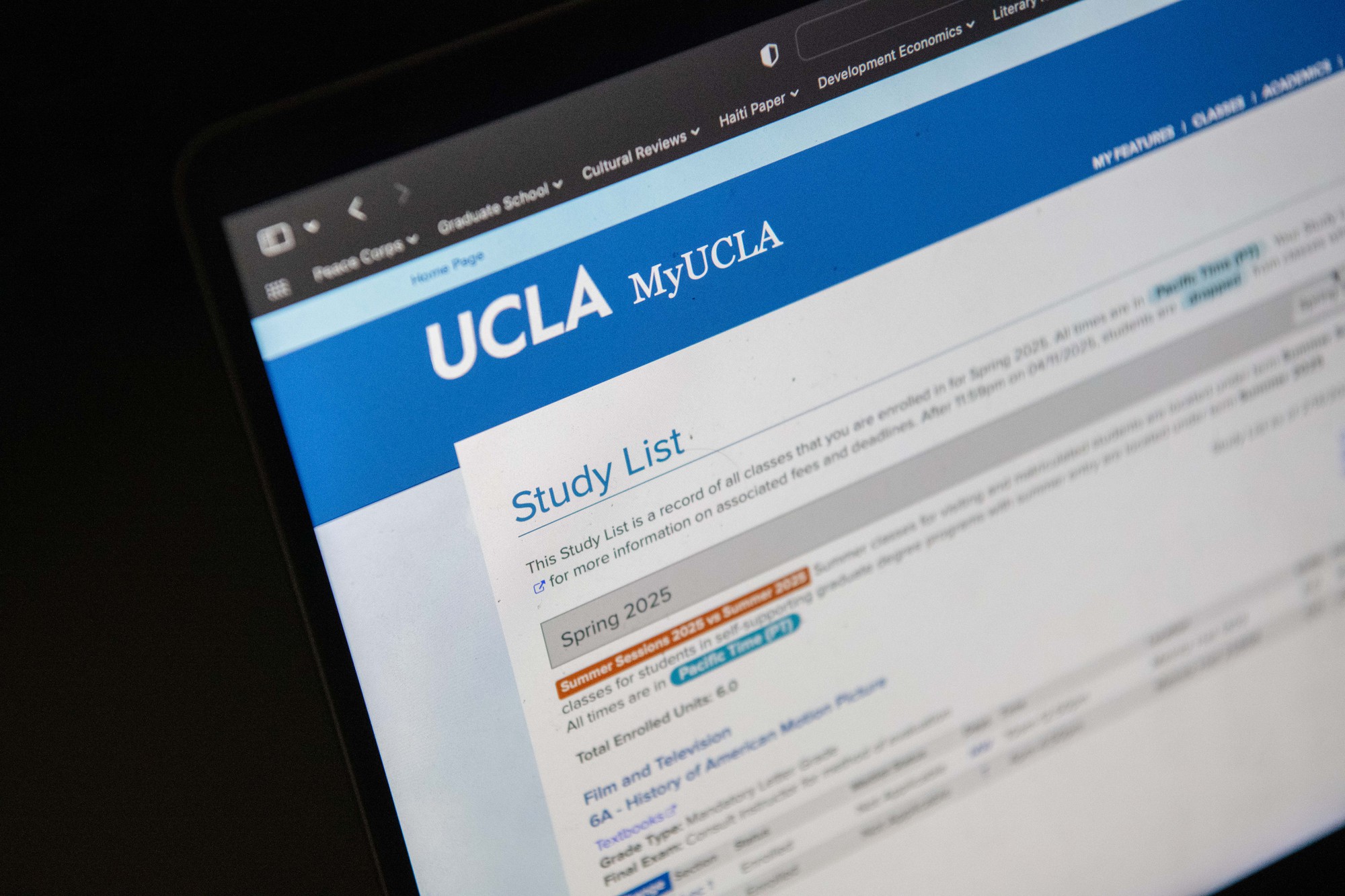Class enrollment is a quarterly struggle for UCLA students, with many students dreading the procedure because of the unsatisfactory results that are seemingly becoming the new norm. To provide a brief background on the process, each student is given an enrollment time based on the number of units they have completed and their priority status. Therefore, because of the large number of students enrolling, not everyone can secure a spot in the class they need, with the professor they would prefer or in one that fits their schedule.
As a result of this competitiveness, students have taken matters into their own hands. For one, they have started selling classes, especially those with significant demand and limited seats, to one another on social media platforms. The prices range anywhere from $50 to $200, with some students claiming they have paid even higher sums. The process unfolds similarly to an auction, where the items being bid on are courses, and the auctioneers are students. This almost underground market operates for a few weeks both before and after enrollment appointments are released. Desperation is high, so decision-making is hindered.
Students also offer money to their peers with earlier enrollment times to “hold” specific courses for them so that when their enrollment times arrive, they can switch to the class someone else has temporarily saved a spot in. Students will post hundreds of stories on social media platforms such as Snapchat and reach out to others on Reddit to make the exchange possible. This uncertainty stresses many students out and has them doing whatever they can to get the classes they need.
Difficulty in obtaining the classes students need for their majors and minors has several implications. One of the most consequential is that students, especially first-years and second-years, are unable to complete their prerequisites on time, impacting their ability to enroll in upper-division courses. The struggle could potentially hold students back from graduating on time or give them no choice but to enroll in either summer courses or classes at external institutions, such as other UCs or community colleges.
Furthermore, the competitive nature of class enrollment often forces students to take their classes in less-than-ideal sequences. An example of this would be a quarter mostly filled with general education requirements followed by a huge overload of major-specific courses. It is almost impossible to achieve a well-curated balance of classes when students are not always given the liberty to enroll in the classes they want. Even though they may have crafted a four-year plan with the academic counselors for their respective career paths, enrollment times call for many changes.
Ultimately, it is unfair how the enrollment system leaves some students scrambling to get spots in any classes they can when they are already paying a large sum to obtain a degree from the school. Even though solutions like PTE numbers and regularly monitoring the class planner to check for open spots exist, they are not sustainable in the long run. The university does not seem to be doing much to solve the issue, although there is a question of whether a permanent solution even exists.
For now, all students can do is accept that they may not be able to get the classes they need during some quarters. They must work around the unfortunate reality of class enrollment if they want to progress in completing their degrees.
—
Featured Image Photographed by Finn Martin/BruinLife

